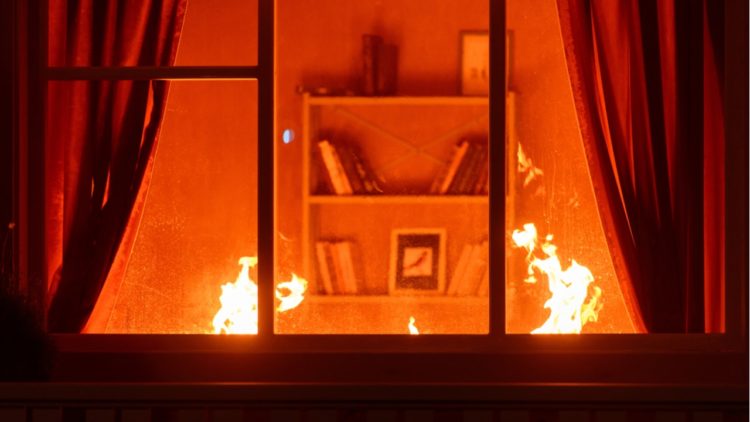
Fires and other related perils, i.e. events which cause a financial loss, have become a common cause of losses in recent times. These perils cause unspeakable loss to property as well as goods. That is why having a fire insurance policy becomes important.
The policy covers the financial loss that you face when assets are damaged due to fire or other covered perils. You can buy a fire insurance plan under the following circumstances –
- If you are an owner of goods and/or property
- If you are a pawnbroker or pawnee (pawnbroker – an individual who lends money to another based on any asset pawned by another; pawnee is an individual who lends money to another individual against an asset which is pawned)
- If you are a mortgagee (a mortgagee is a financial institution that lends money based on the mortgage of an asset)
- If you are the assignee official receiver of assets where insolvency proceedings are involved
- If you are a warehouse owner and goods are stored in your warehouse for which you are responsible
- If you are an individual who has lawful possession of any goods or property
Table of Contents
- Types of fire insurance policies
- Which type of fire insurance policy should you buy
- Coverage under fire insurance policies
- What is not covered under fire insurance policies
- Documents required for claim registration in fire insurance
Types of fire insurance policies in India
Different types of fire insurance plans are offered in India depending on the coverage needs of different individuals. The policies can be for fixed assets like buildings, plants and property or for goods and stocks of the business. The commonly available types of fire insurance plans include the following –
For fixed assets
- Replacement value policy
As the name suggests, this policy works on the concept of replacing the asset that is damaged due to a covered peril. The insurance company pays the replacement value of the asset which is damaged. The replacement value is calculated as the market value of the asset minus depreciation based on the asset’s age. If the property is insured, the cost of construction of the property is covered under the policy. In the case of other assets, their replacement value is calculated and paid as a claim. - Reinstatement value policy
A reinstatement value policy is nothing but an added clause under the replacement value policy. As per this clause, the insurance company undertakes to replace the damaged property to its original condition which was prior to the loss. The reinstatement clause is applicable only for fixed assets like buildings. Other assets cannot be covered under this clause. Moreover, you get coverage on a reinstatement basis only if you choose the reinstatement clause in the fire insurance policy. If the clause is not selected, claims will be paid on a replacement value basis only.
For goods, stocks, and other non-fixed assets
- Floater policy
This policy is ideal for assets that are located at different locations. A single policy can be taken for all the assets and the assets would be covered on a floater basis. However, to avail coverage, every location and the value of the assets at each location would have to be specified. - Declaration policy
A declaration policy is suitable for assets whose value changes during the year, like stocks in a business. Under this policy, a provisional sum insured is taken and the premium is paid for the same. The sum insured would represent the maximum risk of the insurance company. Once a month is completed, the highest value achieved by the fluctuating asset is recorded and declared. Thereafter, the average of the declared value is calculated and it becomes the actual sum insured of the policy. If the actual sum insured is lower than the provisional sum insured, you can claim a premium refund. - Floater declaration policy
This policy is a combination of floater policy and declaration policy. Assets stored at different locations whose values fluctuate over the year can be covered under a single policy through this cover. - Specific policy
This policy covers the loss up to a specific amount. The specific amount is the sum insured of the policy which is usually lower than the actual value of the asset. - Comprehensive policy
As the name suggests, a comprehensive policy has the widest scope of cover and covers the asset against the maximum number of perils. - Valued policy
Assets whose market value cannot be assessed can be insured under a valued policy. Under the policy, coverage is allowed for an agreed value of the asset which is the best estimate of the asset’s market value. - Valuable policy
Under this plan, the sum insured is not decided at the time of buying the policy. The claim amount is calculated at the time of loss. To calculate the claim amount, the market value of the asset is taken into consideration. - Average policy
The average policy works on the principle of ‘Average Clause’. An average clause is applicable if you avail a sum insured that is lower than the actual value of the good. In that case, when a claim is made, you don’t get the full amount of the claim. You get an average claim which is calculated in proportion to the sum insured that you have taken. For instance, suppose the value of an asset is INR 1 lakh and you avail a sum insured of INR 80,000. Since you have insured only 80% of the asset’s value, you would get an 80% claim settlement. So, if the claim is for INR 50,000, the insurance company would apply the average clause and pay a claim of only INR 40,000. - Consequential loss policy
This policy covers the loss of profit that you can suffer when a fire disrupts your business.
Which type of fire insurance policy should you buy?
There are some factors that you should consider when choosing the right type of fire insurance plan. The factors which should determine your choice of the policy include the following –
- The type of risk that is being covered
Choose a policy based on the type of risk that you face. If you have to insure assets at multiple locations, choose a floater policy. If the value of your assets cannot be accurately ascertained, a valued policy would make more sense. So, choose a policy based on the type of risk that you face. - The nature of the asset that you want to insure
As stated earlier, different types of assets can be insured under different types of plans. For property and fixed assets, you can choose replacement value or reinstatement value policies while for other assets there are other policies. So, choose a policy suiting the asset which is to be insured. - Exposure risks
Assess the types of risks to which the asset is exposed and then choose the best policy. - Coverage duration
It is important to know the period for which you need to take the coverage before you select the most suitable fire insurance policy.
Coverage under fire insurance policies
Fire insurance plans not only cover losses suffered by fire but also losses suffered by other perils. The common perils which are covered under fire insurance policies include the following –
- Fire, explosion or implosion
- Lightning
- Damage due to an aircraft
- Strikes, riots or any other type of malicious acts that cause damage
- Storms, typhoons, floods, and inundation which is collectively called STFI
- Impact damage which occurs on impact with road or rail vehicles, animals, etc.
- Subsidence, rockslides or landslides
- Overflowing or bursting of water tanks, pipes and other apparatus
- Missile testing operations and the damages caused thereof
- Water leakage from automatic sprinkler installations which causes damage
- Bush fire
What is not covered under fire insurance policies?
Despite covering a number of perils besides fire, fire insurance policies also have some common exclusions. These exclusions include the following –
- Losses by fire which was caused due to earthquakes
- Perils like war, invasion and the like
- Perils like martial law, insurrection or rebellion
- Underground fires and the losses that they cause
- The loss suffered when the insured property is burned on the directives of a public authority
- Theft related losses suffered during or after the fire
- Spontaneous combustion
- Losses faced because of nuclear perils
- Losses suffered because of pollution and/or contamination
- Any type of consequential losses
Documents required for claim registration in fire insurance
In case of a claim, you should submit the following documents for registering your claim with the insurance company –
- Copy of the policy bond which should also include the schedule of benefits as well as any clauses which have been attached therein
- The fire insurance claim form should be completely filled out and signed
- Newspaper cutting where the instance of the fire has been reported (If available)
- Previous claim records, if any
- Photographs of the damages suffered
- Police FIR
- Report of the fire brigade
- The forensic report, if available
- Final investigation report
Once the claim is registered, the insurance company would get the claim surveyed and then the claim would be settled.
Fire insurance is very important coverage for protection against the loss of assets. Losses cannot be avoided but you can insure against such losses if you are smart and buy the right type of fire insurance policy.
Read more:
Frequently Asked Questions
- Can I change the type of fire insurance policy after I have bought it?
Yes, you can change the fire insurance policy after the coverage period of the original policy is over. - Can I increase the scope of coverage under fire insurance plans?
Yes, fire insurance plans allow various coverage extensions which you can choose to increase the scope of coverage. Some common extensions include the following –- Forest fire
- Damages suffered by the stock when they are stored in cold storage
- Cover for earthquake-related damages
- Damages resulting from leakage and contamination
- Terrorism
- Cost of debris removal which exceeds 1% of the claim amount
- Architects, surveyors or engineers’ fees that exceed 3% of the claim amount
- Omission to avail coverage for alterations, additions, and extension
- Rent paid for an alternate accommodation
- How is the premium calculated?
Premiums of fire insurance plans depend on the type of policy bought, the risks covered, the sum insured, the value of the asset, usage of the asset that has been insured, expected risks and the policy extensions taken. - If the sum insured is higher than the value of the property would the claim be higher?
No, the claim would be paid on replacement value or reinstatement value clause even if you choose a higher sum insured level.
Found this post informational?
Browse Turtlemint Blogs to read interesting posts related to Health Insurance, Car Insurance, Bike Insurance, and Life Insurance. You can visit Turtlemint to Buy Insurance Online.










